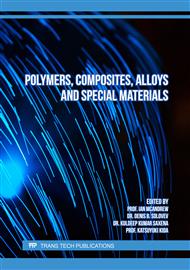p.101
p.107
p.113
p.119
p.125
p.133
p.139
p.151
p.157
A Precision Analysis of Machining Incoloy 901 Aerospace Materials with Cemented Carpide Tools by the Taguchi Method
Abstract:
In this research work, was made a study on the effects of turning conditions on incoloy 901 nickel-based superalloy and performed a precision analyzes using the Taguchi L27 orthogonal array. Using the results of variance analysis (ANOVA) and signal-to-noise (S / N) ratio and taking into account the "smaller is better" approach were statistically investigated to establish a correlation amongst the speed of cutting, feed rate and cutting tool with respect to surface quality and cutting forces. KCU10, K313 and KCU25 cemented carpide cutting tool were used in experimental study. The experimental results have revealed the most important factor influencing the cutting force and surface quality was the type of the cutting tool and it’s had a serious effect on both, KCU10 and followed by KCU25 was found better than the other cutting tool. Optimum parameters for the cutting forces were found 0,150 mm/rev., 90 m/min. with KCU10 cutting tool The found findings can help for revealed the optimization of machining parameters and surface characteristics of Incoloy 901 during high speed turning.
Info:
Periodical:
Pages:
133-137
Citation:
Online since:
April 2023
Authors:
Keywords:
Price:
Сopyright:
© 2023 Trans Tech Publications Ltd. All Rights Reserved
Share:
Citation:



